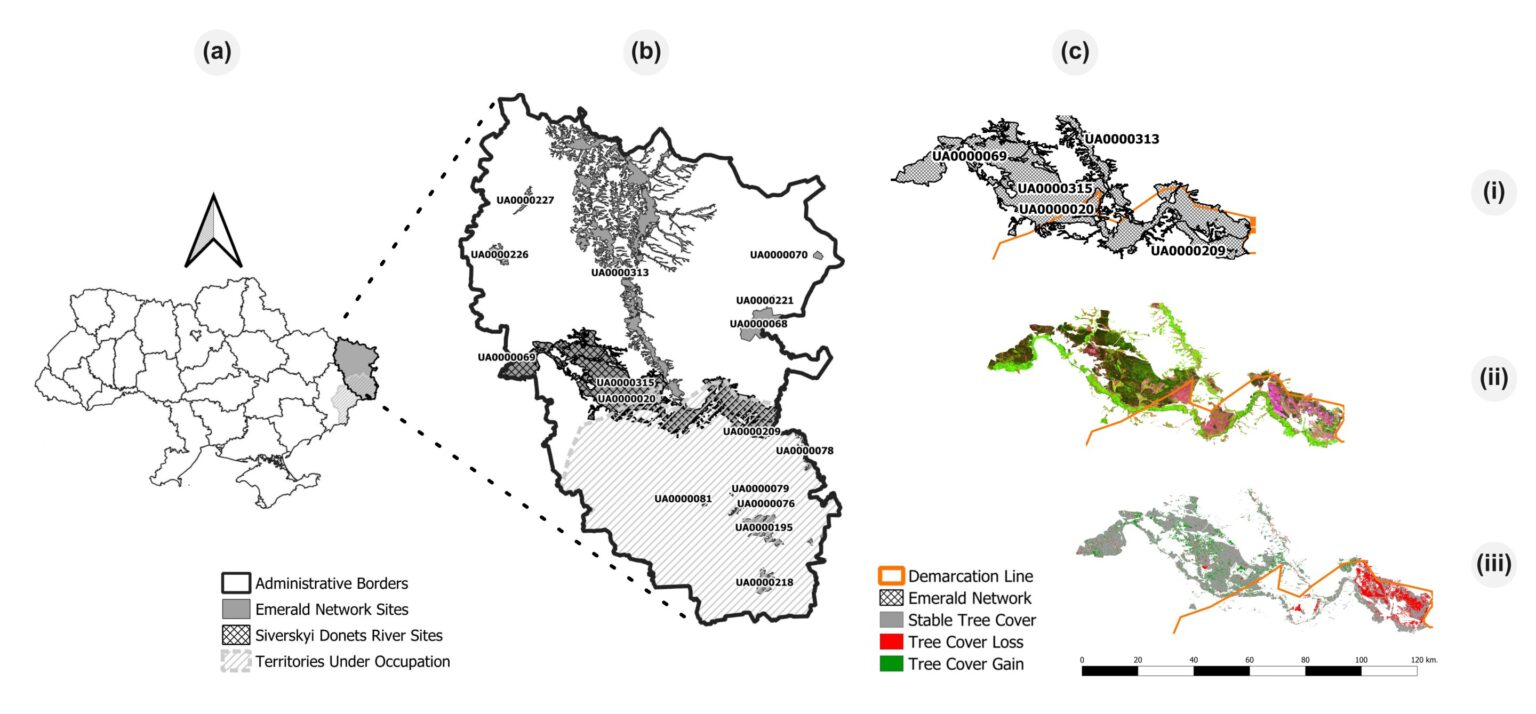The satellites give scientists an opportunity to assess how the war with Russia, which has been going on since 2014, has affected forests in Ukraine. It has been established that in the territories of the Emerald Network, which are controlled by the aggressor state, the natural environment is actively being destroyed.

Emerald Network
Ukraine’s opposition to the Russian invasion has been going on since 2014. Then, the aggressor country occupied parts of the Donetsk and Luhansk regions. Recently, a group of Ukrainian and American scientists were able to assess the impact of these events on the objects of the Emerald Network using satellite data. They published a study on this in the journal Communications Earth & Environment.
The Emerald Network is a pan-European system of protected areas established in accordance with the Bern Convention of 1979. Its main goal is to stop deforestation and restore areas in the Old World.
Ukraine joined the Bern Convention in 1996, and in 2000, the Ukrainian component of the Emerald Network was created, including in the Donetsk and Luhansk regions. Up to this point, the remnants of forests in these territories were ruthlessly cut down. The new study gave us an opportunity to establish how the situation changed after that.

Russia destroys Ukrainian forests
The new study was made possible by the Landsat and Copernicus Sentinel 1 and 2 satellites. They provided an assessment of changes in forest cover in the Luhansk and Donetsk regions in 2014–2020. The researchers compared them with data from 2000–2013.
It turned out that while the Emerald Network of these regions was functioning in the Ukrainian legal field, both in the part of the regions that later came under Russian occupation and in the one over which Ukraine retained control, reforestation was taking place. Their area in these territories increased by 10 and 8 percent, respectively.
With the arrival of the “liberators”, everything changed. In the parts of the regions that remained Ukrainian, the forest area increased by 9 percent. In the occupied territory, it decreased by 25 percent. This eloquently shows how much better nature feels in Ukrainian realities than in Russian ones.
The research was organized as part of the SWIFTT project, which aimed to provide forest researchers with accessible, simple and effective remote sensing tools based on Copernicus satellite images and powerful machine learning models. They allow scientists to effectively map a variety of threats to them, such as damage from insects, wind, Russians, and fires.
According to phys.org
Follow us on Twitter to get the most interesting space news in time
https://twitter.com/ust_magazine


